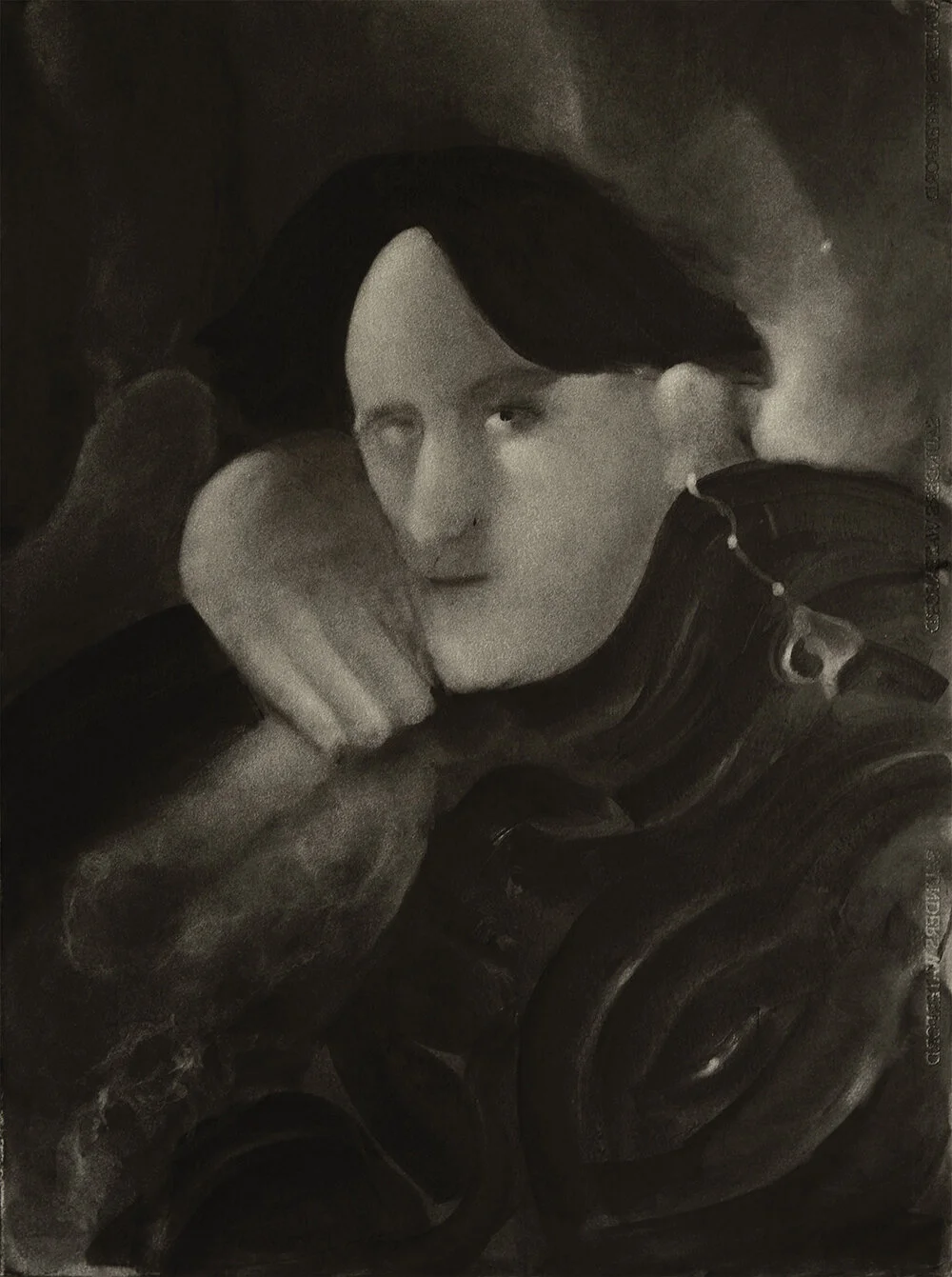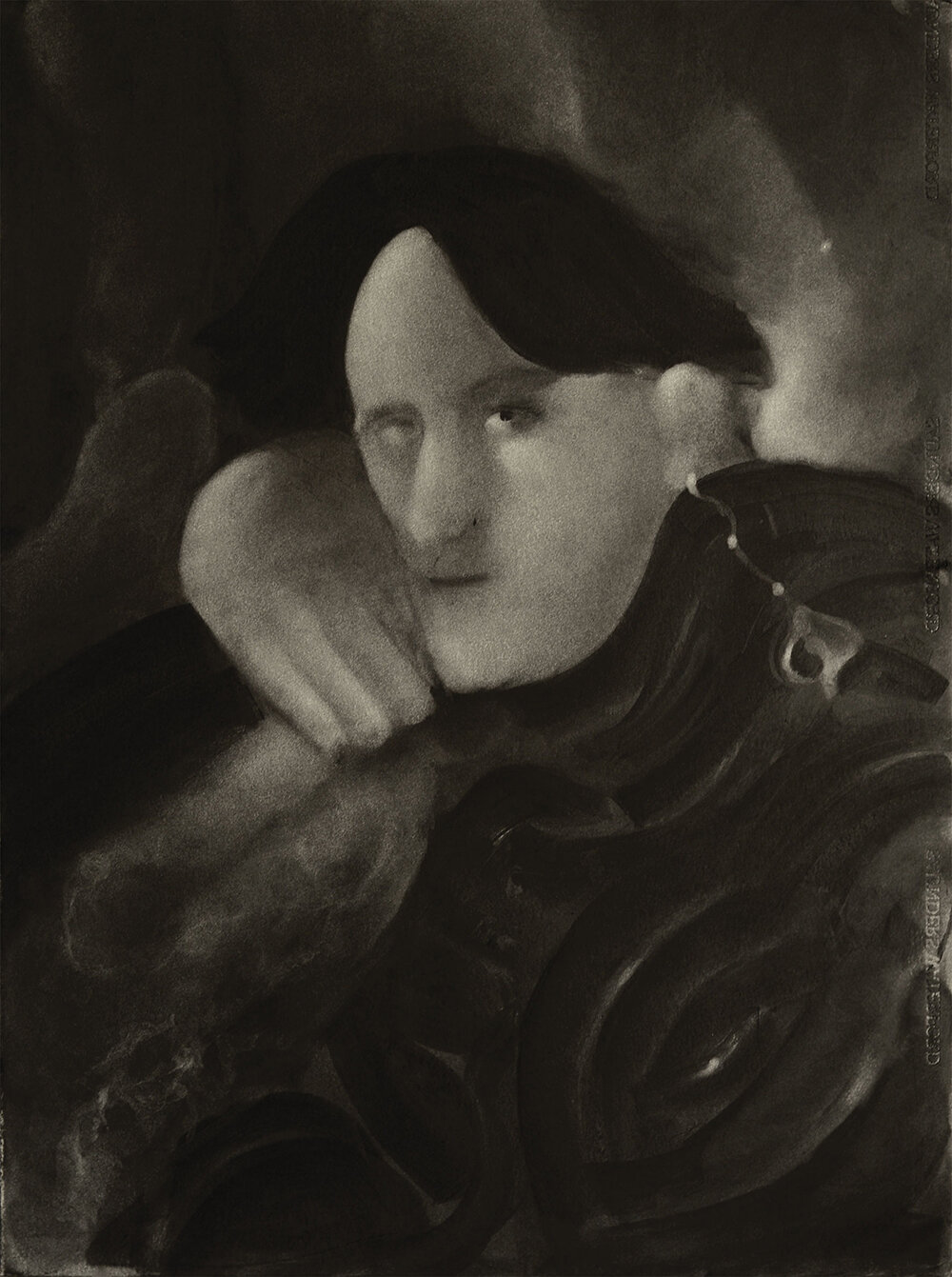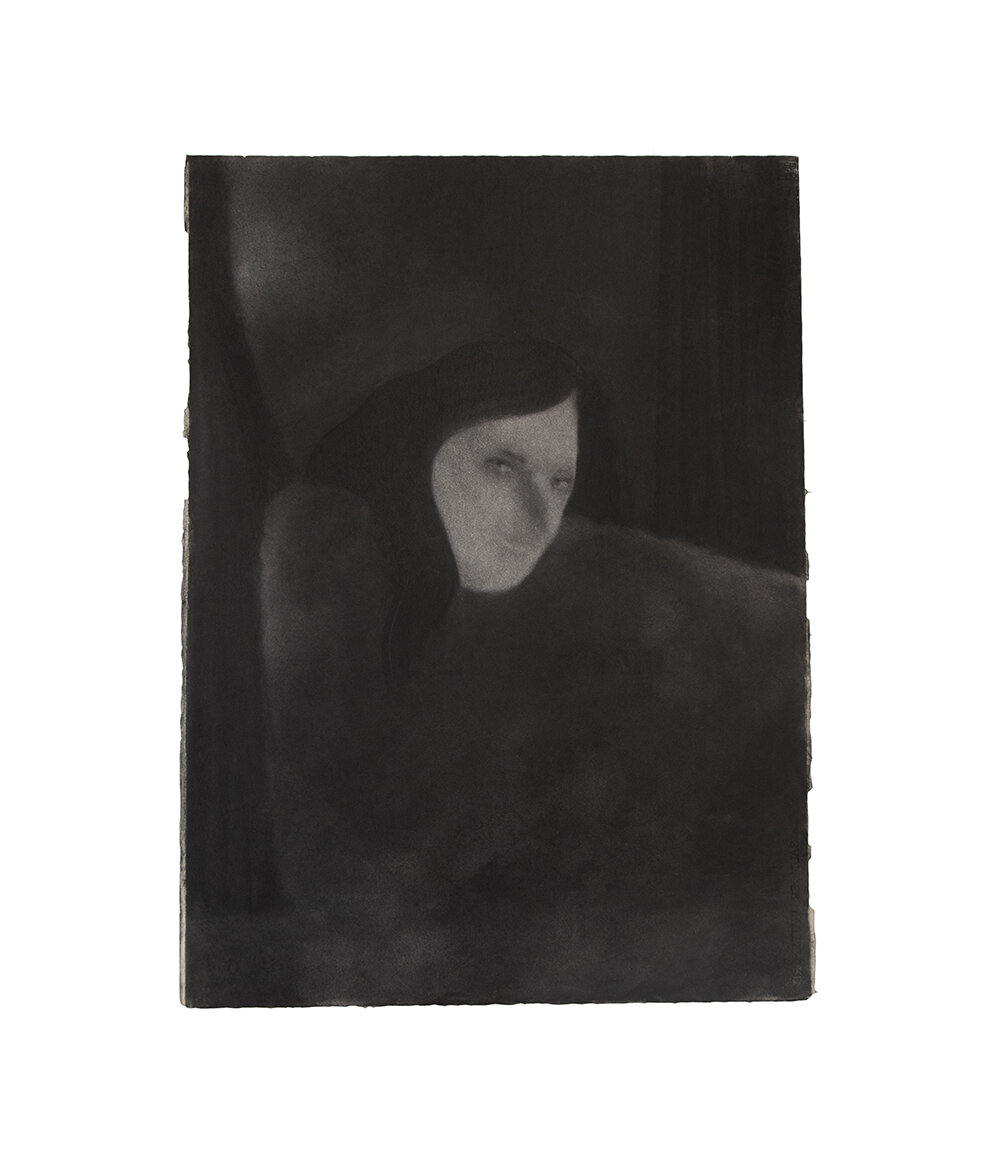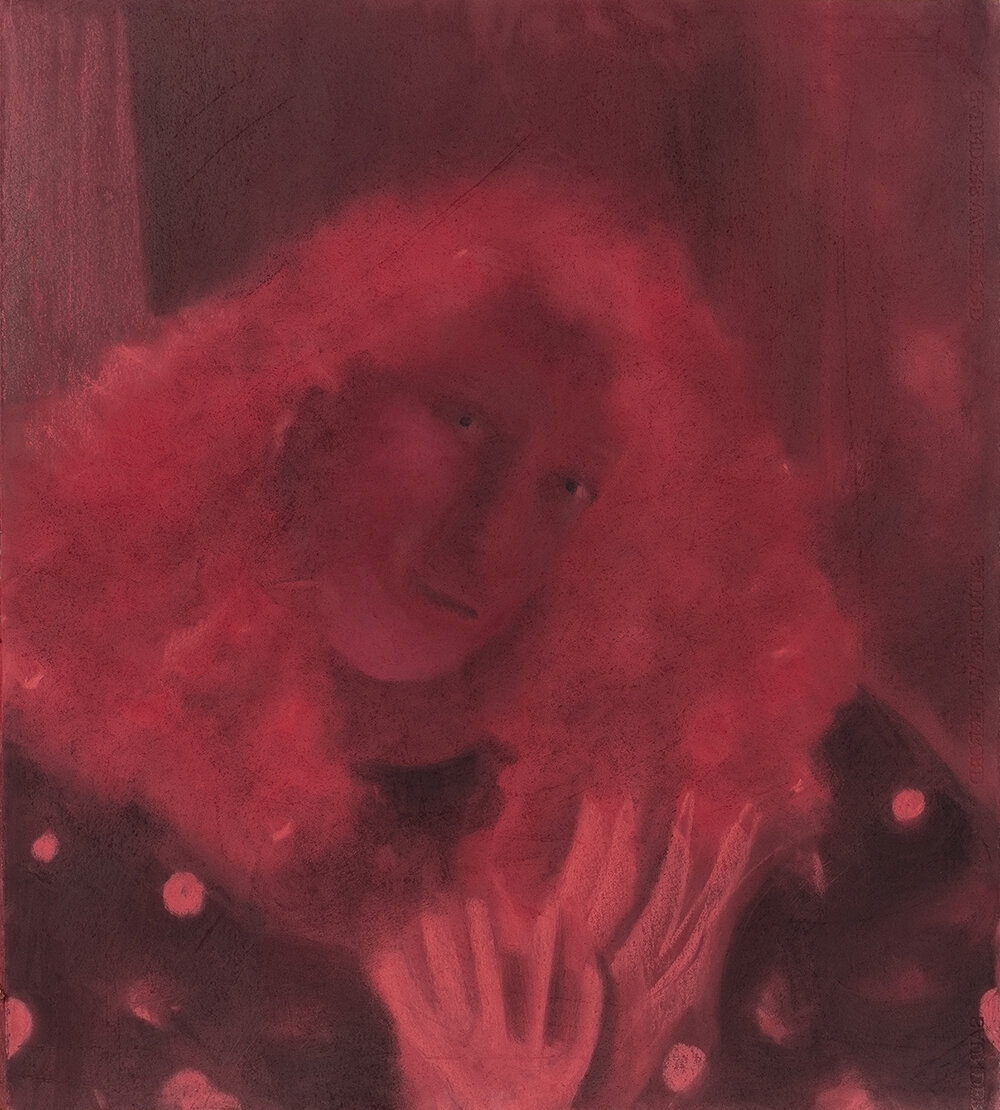Omer Halperin
What happens when we exchange gazes with a stranger on the street? Are we reading the signs right? Can we communicate telepathically?
Omer Halperin gives us the chance to ask ourselves these questions in the intimate encounters with her charcoals. The thick cloud that is the human psyche is translated into paper through layers of light and shadow that create an enigmatic atmosphere. From the painting’s foggy background emerge subtle bodies with hypnotic gazes, challenging us to get closer and decipher what they are trying to say.
In a time where physical interaction is so limited, Halperin’s charcoals remind us why these momentary encounters are still relevant and full of potential. In our conversation, the artist describes her artistic development through the search for continuity, her intimate connection to paper and charcoal and her attempt to work the least outside influences as possible.
What attracted you to charcoal as a material at first?
My first encounter with charcoal was through a drawing course I took while studying at the BFA. The tutor was teaching a specific technique and the outcome was very pleasing in terms of light and volume but the drawing process was too structural for me.
I started to work with charcoal a few years later, after starting the MFA program. Up until then, my work focused on the line, which led to a rapid working process, dedicating not more than 5 minutes to each drawing. There was no such thing as changing or erasing anything, whatever intuitively came out, that was it.
When I started to study again I wanted to change something in my work. The thing I wanted most was to have continuity, to be able to go ‘inside’ the drawing again. I picked up a small charcoal stick leftover that I found and started to draw something and erase it, and then again and again until marks and stains became a part of the paper. Erasing the charcoal allowed me to combine drawing and painting methods. The act of erasing created an opportunity to start over, to add another layer and then remove it. It was less dramatic than throwing the work in the garbage like I used to do pretty often.
What exactly does it mean for you ‘to go inside a drawing’?
I think that in all mediums of art there’s a desire to go in them, to be immersed with/by the work. Maybe my way to do that is connected to the action of working without an image, which for me means that there’s no external gaze or something else besides the work and myself. I'm not turning my gaze away from the paper while drawing and this creates an intimacy between me and the work and it also connects me more to myself in a way.
I also try not to involve an act of choosing an image. I'm usually waiting for something to come out of the paper, or looking for something within the paper. When I'm working, I'm randomly marking the surface without any specific intention. So, the whole observation process happens in one place - the painting. It's more about contemplation than observation, working with no image increases the process of searching. I know that I’ll paint a figure, but most of the time I don't have a previous idea about it.
During the drawing process, when it is just you and the paper, do you think about the backstory or the personal characteristics of the figure you are creating?
I'm usually not thinking of a backstory while I'm working. I want the characters not to be attached to any background, but rather to pull them out of a 'narrative'. I’m trying to create an encounter that happens through their gaze - their main characteristic. Sometimes there’s a kind of a plot, mostly when I'm installing them in space: Who's going to be next to who, whose two are going to stare at each other... I want them to have relationships between them.
In some paintings, I think about a situation or scene, during or after the work is finished.
In the work Waiting Room I thought about this moment in the gynaecologist’s waiting room, where everyone’s very self-absorbed, not making eye contact except for this woman, that seems she’s already inside the doctor's room, sitting on the test chair.
As you said, your figures’ gaze is one of their strongest features and it makes them almost provocative. They seem to be challenging the viewer to get closer and in some ways, they deconstruct the awkwardness of looking someone directly in the eyes. Is this work-viewer dynamic something that interests you when setting up your work, or is your focus mainly on how the works interact with each other?
Yes, of course, I'm very much interested in the encounter between the painting and the viewer. I refer to these paintings as "portraits of a gaze", I think this has to do with the complex relationship I have with people's gaze, it is something I'm very much aware of in people I meet or see. I can see someone in the street, someone I don't know, or maybe I know but we don't have any connection... and we look at each other just for a brief moment. Then I try to remember their gaze, the way they looked at me.
It can happen in many different situations when you see people that don't necessarily talk to you, they just look at you, and think something to themselves. I think it is a strong moment, to look at someone you don't know. If someone looks at you, they think about you, but you don't know what they think, and they don't know what you think as well.
Your work brings to light some of the intricacies of human exchange by exploring postures, gazes and gestures. In a time where physical interactions are becoming less frequent, how do you think these intimate moments may be taken differently in the digital world?
It's a complicated question. I think that digital formats and social media are a problem for art. Art is constantly being adapted to the media and this pushes away the abstract. It's sometimes strange for me to talk about the experience in front of the works. I live very close to them as I'm working from home, so they are very much present in all my daily life routines. But from seeing them in digital formats, I can say that it's very hard to feel or even see their materiality. I think it changes the whole experience in front of them. There are some aspects in these works, like in many other artworks, that can't pass through the digital. There is no substitute for seeing art in real life as there is no substitute for being physically close to people.
interview PIETRA GALLI
What to read next

















